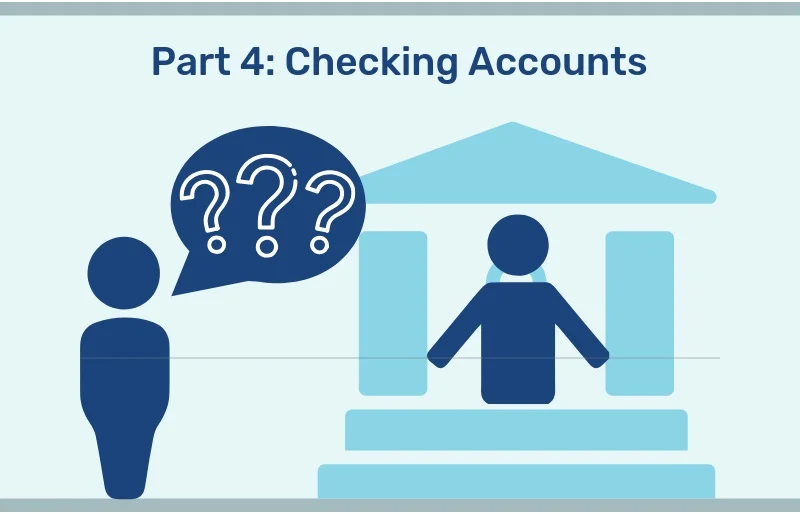Being a Smart Banking Consumer: Opening a Checking Account
/Banks are a place for us to handle our checking, savings, and possibly a loan. Beyond that, for many of us banking is a black hole. Why banks do what they do and how they do it is little understood outside of the banking community.
The more information you have, the better consumer you can be.
Being a Smart Banking Consumer
(Part 11) Opening a Checking Account
What is Needed to Open a Checking Account?
As we discussed in the first post in this series, in order to open a checking account at a bank, it’s best if you have not had a checking account forced closed as the result of bouncing checks at another bank in the past. All banks are members of a checking account tracking company. Banks will report forced closed accounts and that information is available to all members.
When you, as a new customer, walk into the bank to open a checking account, your history with other banks will be checked. Some banks will allow you to open an account even if you’ve had trouble with a previous bank, but there are few. Again, the moral of the story here is to treat your account and your bank in a nice way.
You’ll need to have a current driver’s license or official picture ID for identification. Some banks will allow you to open an account with zero money. Others want a minimum deposit. The bank will also check your name against an official possible terrorist list. You will be asked a series of questions to determine if you are a risk for money laundering.
The Documents: What You Will Receive and What They Mean For You
After all the background and identification requirements are finished, the bank will briefly explain the various handouts that you will be required to acknowledge that you received. These handouts explain your rights and responsibilities and the laws that directly affect your use of the account. These documents may come in separate forms or combined in a few forms. They are as follows:
The Deposit Account Agreement
As the name implies this document will describe the rights of the bank and your rights as a consumer concerning your account. This document is based on the legal issues that arise as the bank processes transactions in your account and your use of the account. We have covered many of these issues in the previous articles, but for example:
The bank has the right to close your account at any time
The bank will not share information about your account without your consent
The Deposit Account Agreement can be somewhere from 50 to 60 pages. I assume that most people never read or even open the agreement after they leave the bank. However, the bank is required to give you this document and it’s a good idea that you at least give it a look.
The Schedule of Fees
This schedule will list the current list of possible fees that the bank will charge you depending on how you use your account. For example:
A wire transfer charge of $50;
A bounced check charge of $35; or,
A stop payment fee of $15.
Other bank fees are listed in this document as well, and it’s a good idea to familiarize yourself with these.
The Privacy Notice
Both the government and the state require the bank to give you your rights regarding the privacy of your information. The Privacy Notice will state whether the bank shares your nonpublic information with other companies or not. Nonpublic information can be your social security number or information about the checks you write.
Banks can, however, share information with companies that provide essential services for the bank. For example, the company that handles the daily processing of the bank’s checks and deposits will have, in their processing software, the essential information to make those deposits and checks to your account. They will tell you if they share information with other companies, that is say, a marketing company. You will have the right to “opt out” if you do not want your information shared with certain companies.
The FDIC Insurance Booklet
The FDIC insures checking accounts up to $250,000 at the present time. This means that if the bank fails, the FDIC will pay out your money to you, or will ensure that the account is transferred to another insured bank. There are several different scenarios that are mentioned in the brochure regarding insurance. For example, a joint account is only insured to the $250,000 limit, but each separate account is fully ensured to this amount. It will also cover accrued interest as long as the total is not over the limit. The insurance covers banking accounts, but it does not cover non-bank type accounts such as stocks and annuities.
We will discuss additional disclosures in the next article. Stay tuned!
© Whatismyhealth

























A checklist of common documents related to deductions and credits that you will need when preparing to file your taxes for last year.